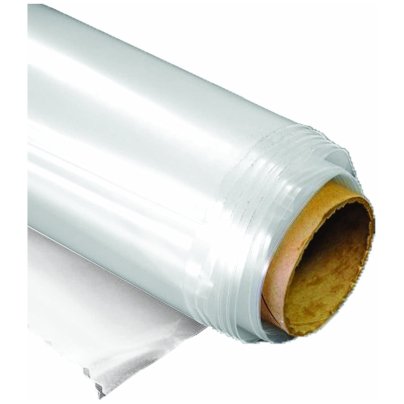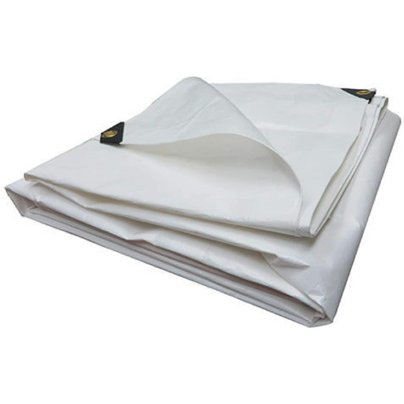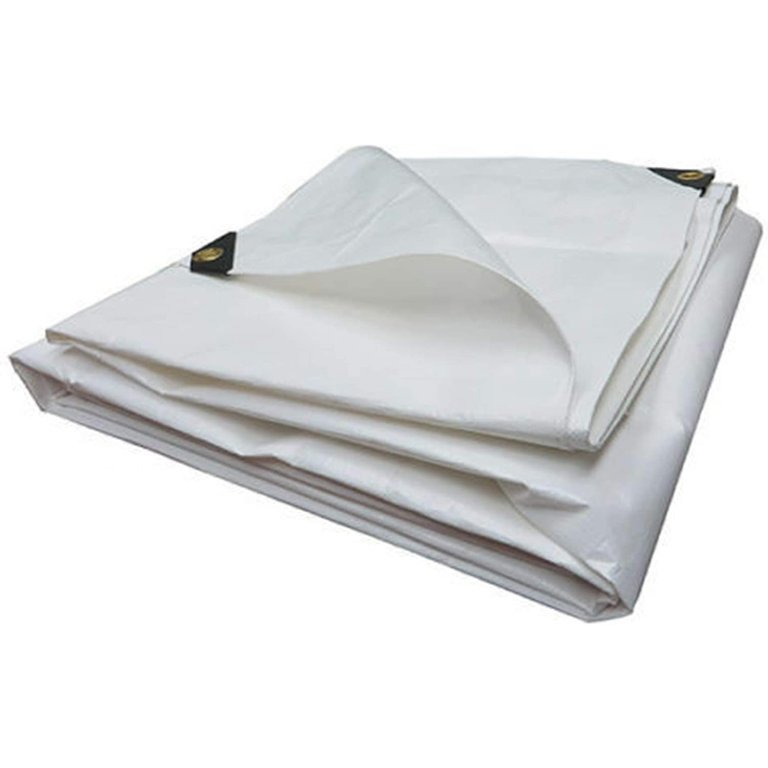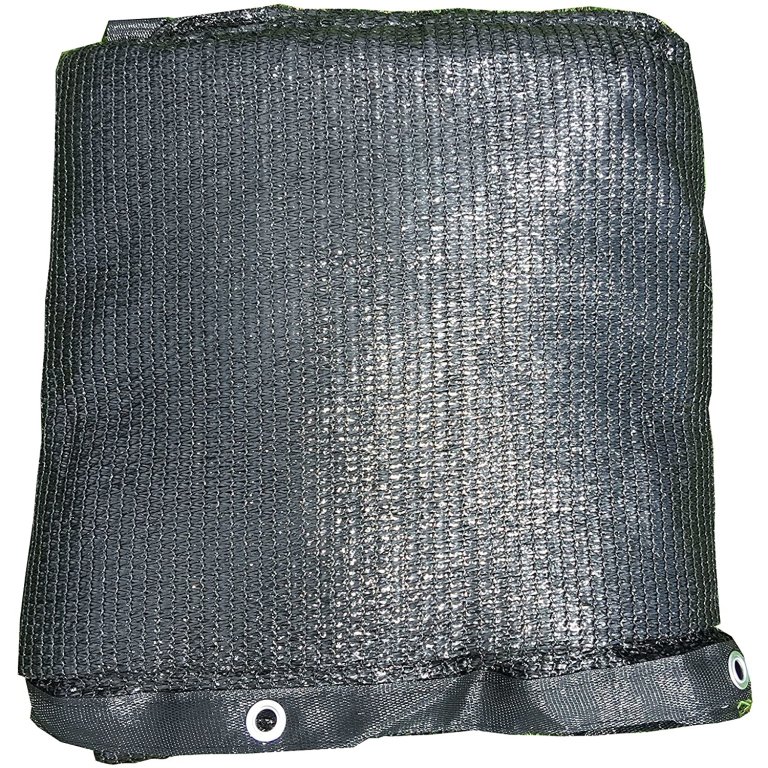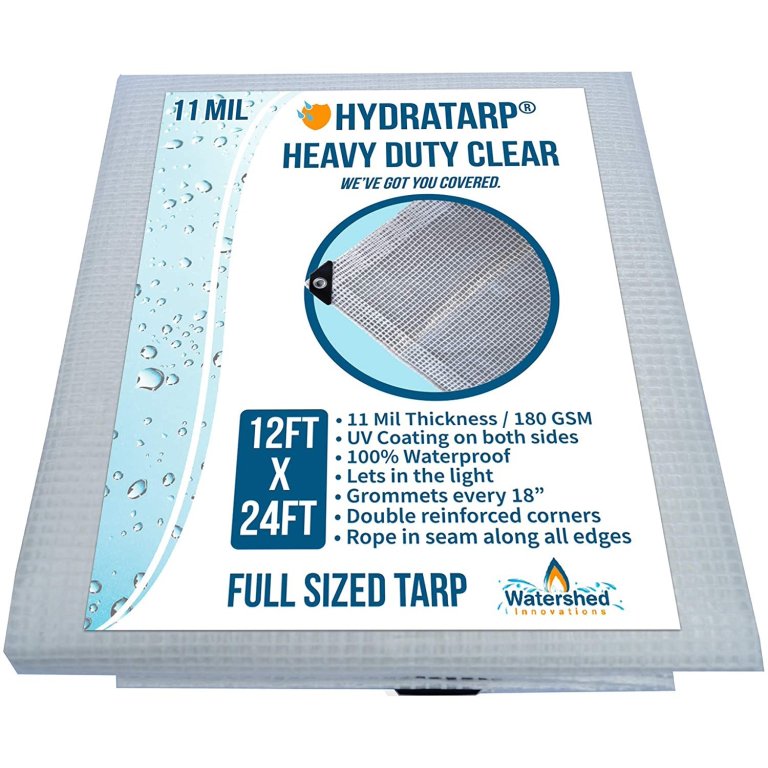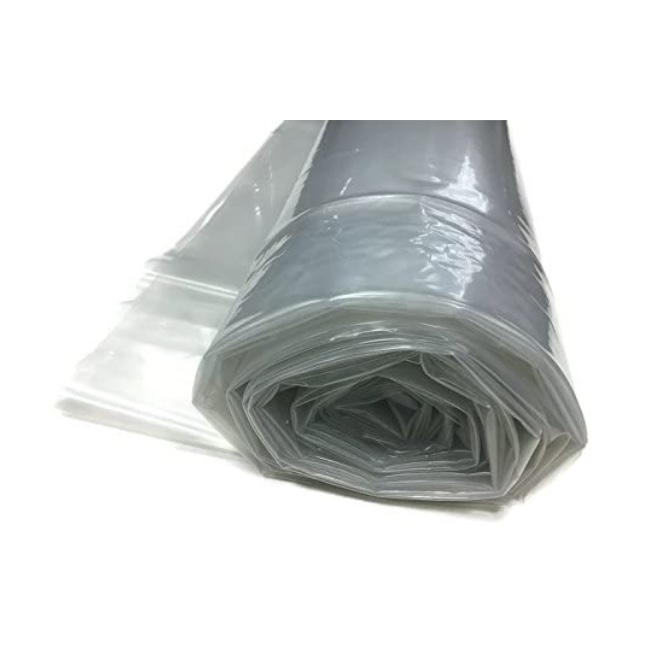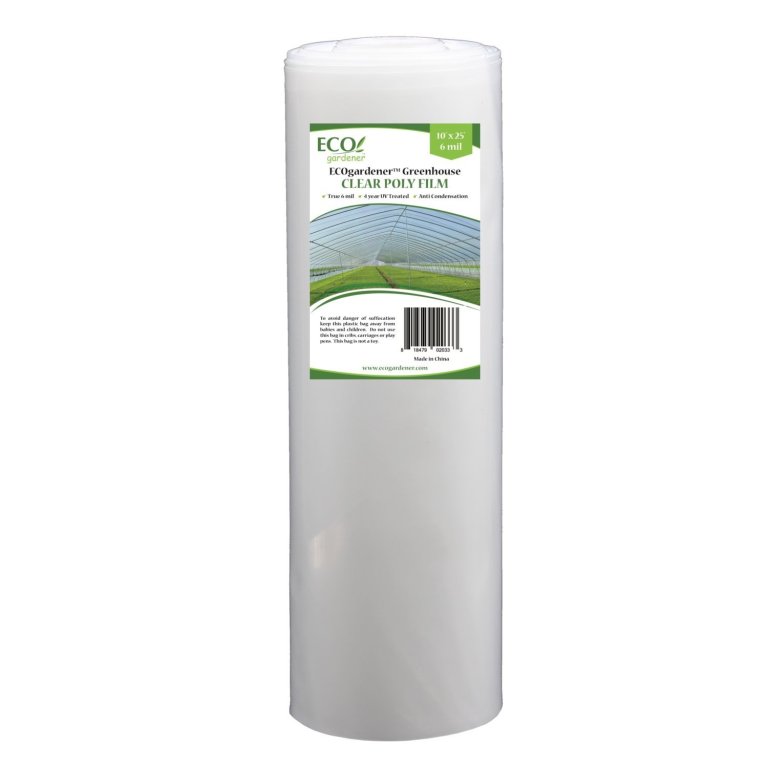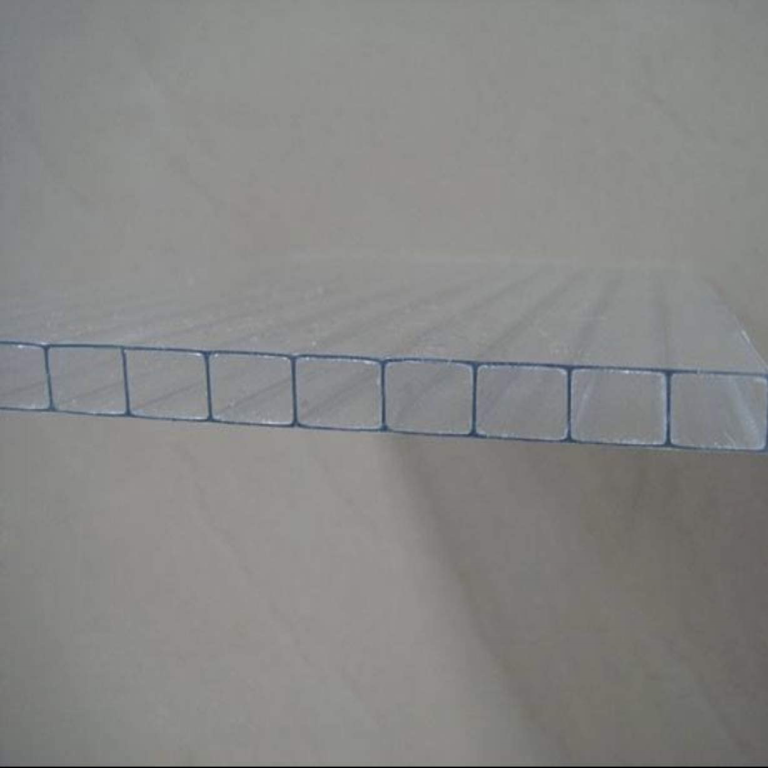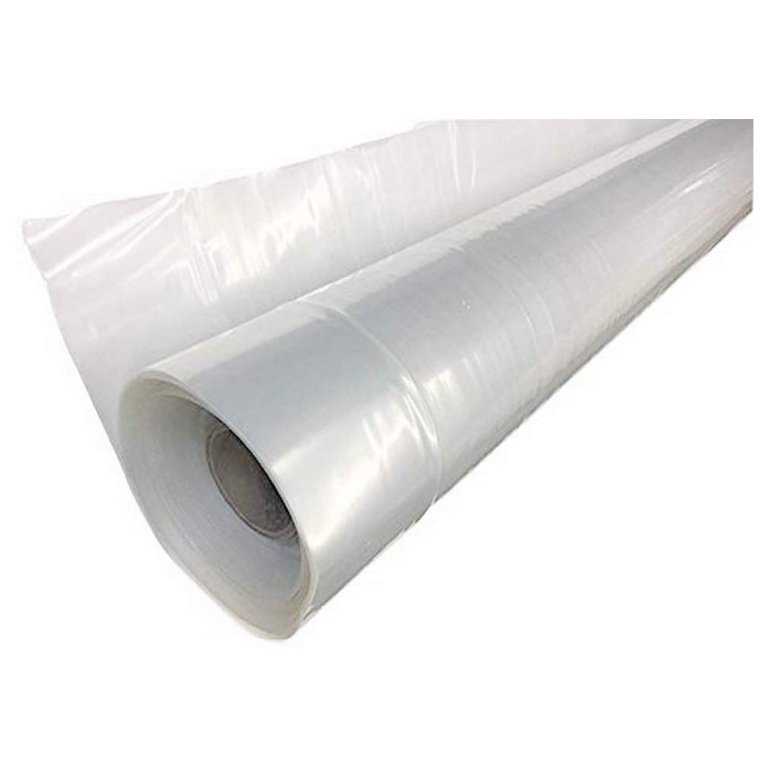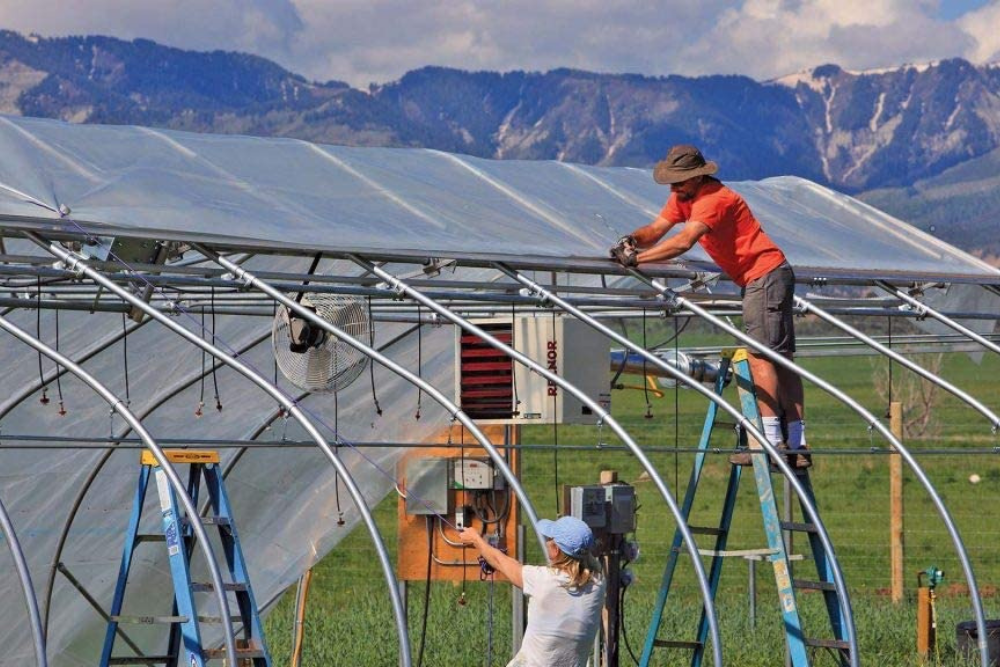
We may earn revenue from the products available on this page and participate in affiliate programs. Learn More ›
Abundant light is essential for healthy plant growth. While some greenhouse gardeners are fortunate enough to have greenhouse walls made from glass panels, the vast majority of greenhouses feature either rigid plastic panels or plastic sheeting. Compared to glass, plastic is inexpensive, lighter in weight, and, simply put, using plastic to build a greenhouse is easier.
The greenhouse offers growers a chance to save money by raising seedlings to later transplant to the garden or provides a spot where tropical plants can survive cold seasons while still receiving ample light. The addition of self-watering planters, automatic drip systems, and automatic ventilation systems all increase a greenhouse’s ability to sustain plants.
Choosing the best greenhouse plastic covering involves considering the local climate and determining the type and size of your own greenhouse and what is best for the plants growing inside it. In this guide, we list some of the top-rated greenhouse plastics on the market today. We also discuss the different types of plastics available for covering greenhouses and why they are well suited for many greenhouse-covering projects.
- BEST OVERALL: Grower’s Solution 6-Mil Greenhouse Clear Plastic Film
- BEST BANG FOR THE BUCK: Frost King 6-Mil Packaged Polyethylene Sheeting
- UPGRADE PICK: Arc Direct 14-Mil Heavy-Duty Fiber Poly Tarp
- BEST SUNBLOCK: Ecty 20-Foot-Wide Sunblock Shade Cloth With Grommets
- BEST REINFORCED: Watershed Innovations 11-Mil Heavy-Duty HydraTarp
- BEST LARGE GREENHOUSE: Farm Plastic Supply 6-Mil Greenhouse Plastic Sheeting
- BEST FOR WINTER: Eco Gardener 25-Foot-Wide Greenhouse Plastic Film
- BEST POLYCARBONATE: Silk Road All-Weather Polycarbonate Greenhouse Panels
- ALSO CONSIDER: A&A Grower Supply 6-Mil Clear Plastic Greenhouse Film
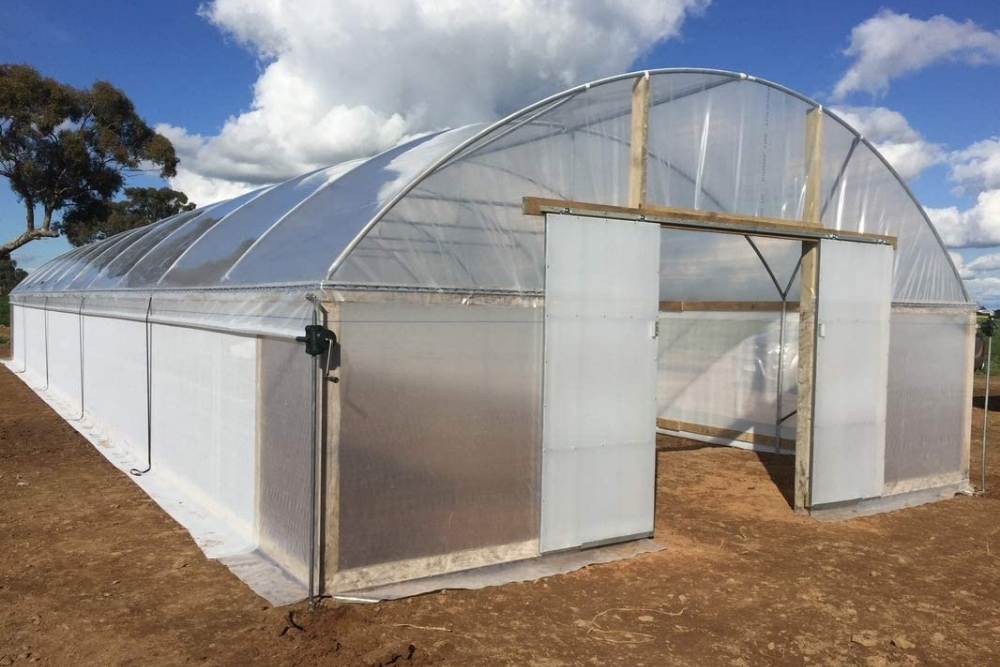
How We Chose the Best Greenhouse Plastics
Based on our research, we found that the type of materials used, size, thickness, ease of use, installation, and other special features are all important in finding the best greenhouse plastics.
Our top choices include greenhouse cover options made from polyethylene and polycarbonate that are 6 to 8 mils thick. To suit any greenhouse structure, these plastics are available in various sizes and opacities, providing diffused light and protecting plants against inclement weather. Regarding installation, many of these plastics include metal grommets for securing or can be cut with a given power tool.
For added convenience, some of the plant covers on our top picks list include special features like rope-hem edges and mesh integrated for ample durability.
Our Top Picks
The best greenhouse plastics are durable, thick enough to resist tearing, and include the additional features that growers need. While greenhouse requirements vary depending on the size of the growing operation and the type of plants being cultivated, any of these greenhouse plastic products would be well suited for covering most home greenhouses.
Best Overall
Grower’s Solution 6-Mil Greenhouse Clear Plastic Film
Pros
- Infrared additives keep greenhouse environment stable and reduce heat loss, encouraging plant growth
- Blocks out harmful UV rays; prevents plants from becoming hot or burning
- Can be attached directly to any metal or wood structures
Cons
- Users must prime PVC structures before covering them with this product
Product Specs
- Material: Polyethylene
- Size: Various; available in lengths of 12 to 52 feet and widths of 25 to 150 feet
- Thickness: 6 mils
- Number of layers: Unspecified
Let the sun shine in! This thin and clear polyethylene plastic film from Grower’s Solution is 6 mils thick, allows 91 percent light transmission for plant growth, and has infrared additives that help keep the greenhouse environment stable, reducing heat loss. This film also blocks harmful UV rays, reducing the risk of scorched foliage on sensitive plants.
Users can attach this polyethylene plastic film directly to wood or metal greenhouse structures, but it’s essential to prime PVC structures before covering them with this product to prevent plastic degradation. The film is available in various sizes, is suitable for small residential projects to larger commercial ones, and offers superior strength in a clear greenhouse film.
Get the Grower’s Solution greenhouse plastic at Amazon or Grower’s Solution.
Best Bang For The Buck
Frost King 6-Mil Packaged Polyethylene Sheeting
Pros
- Slightly opaque clarity does not contain UV blockers; suitable for spaces with shade
- Durable construction; lasts for 1 to 2 years in any greenhouse
- 10-foot length makes this sheeting suitable for most small greenhouses
Cons
- Users must prime PVC structures before covering them with this product
Product Specs
- Material: Polyethylene
- Size: 10 feet long by 25 feet wide
- Thickness: 6 mils
- Number of layers: Unspecified
With this greenhouse plastic sheeting from Frost King, anyone can enjoy the benefits of extending the outdoor growing season without spending a lot of money on greenhouse plastic. Available in clear or black, Frost King’s packaged polyethylene sheeting is 6 mils thick and is 25 feet wide by 10 feet long, making it great for covering greenhouse structures. Best of all, it’s available at an affordable price point. The sheeting features slight opaqueness but does not contain UV blockers, making it best suited for covering a greenhouse that’s protected from the hot afternoon sun.
While this sheeting doesn’t feature many bells and whistles, it should easily last 1 to 2 years. Before any type of polyethylene plastic sheeting is used on a PVC frame, the PVC should be coated with a primer to help prevent the polyethylene from degrading.
Get the Frost King greenhouse plastic at Amazon or DK Hardware.
Upgrade Pick
Arc Direct 14-Mil Heavy-Duty Fiber Poly Tarp
Pros
- Durable, long-lasting polyester mesh; can also serve as a light-duty tarp or as plastic sheeting
- Edges are folded over and finished with reinforced rope for added longevity
- UV-blockers are integrated to avoid searing or burning any plants
- Reinforced aluminum grommets are spaced every few inches for staking or securing
Cons
- This greenhouse plastic’s features may not be necessary for some users
Product Specs
- Material: Polyethylene and polyester mesh
- Size: Various, available in lengths of 5 to 20 feet, and widths of 7 to 40 feet
- Thickness: 14 mils
- Number of layers: 1
This clear, heavy-duty, polyethylene greenhouse plastic from Arc Direct is a beefy 14 mils thick, thanks to embedded polyester mesh that makes this product more of a tarp than just plastic sheeting. The finished tarp is available in various sizes (from 7-feet-wide feet by 5-feet-long to 40-feet-wide feet by 20-feet-long), and the edges are folded over and finished with reinforced rope for extra durability.
The tarp also features UV blockers and is rot- and acid-resistant. It comes with reinforced aluminum grommets spaced every 18 inches along the edges to stake the tarp to the ground for additional wind resistance. This thick greenhouse plastic lets in ample light and is extra thick, so it’s suitable for regions prone to high winds.
Get the Arc Direct greenhouse plastic at Amazon (white) or Arc Direct (clear).
Best Sunblock
Ecty 20-Foot-Wide Sunblock Shade Cloth With Grommets
Pros
- This cloth’s 100 percent UV-stabilized construction prevents unwanted searing and heat Reinforced grommets built-in for staking down; can withstand inclement weather conditions Breathable material allows for some airflow to penetrate the inside of the greenhouse
Cons
- Some users have reported poor-quality grommets on this product
Product Specs
- Material: UV-stabilized polyethylene
- Size: 10 feet long by 20 feet wide
- Thickness: Unspecified
- Number of layers: Unspecified
For growing plants that need extra protection from direct sun rays, check out this sunblock shade cloth from Ecty. It’s designed to protect tender plants from harsh sunlight. This multipurpose cloth features 100 percent UV-stabilized polyethylene and can be installed over a standard hoop greenhouse frame.
It features reinforced grommets along the edges for staking or tying down the cover and serves as an essential wind and sun break when used on a greenhouse. The shade provided by this polyethylene film makes it suitable for regions that experience a lot of hot sun. It’s available in a lightweight yet durable 20-foot-wide by 10-foot-long piece.
Get the Ecty greenhouse plastic at Amazon.
Best Reinforced
Watershed Innovations 11-Mil Heavy-Duty HydraTarp
Pros
- Cross-weave mesh integrated; this tarp provides ample strength and excellent durability
- UV blockers, rope-hem edges, and reinforced grommets provide added user-friendliness
- Waterproof and rot-resistant design can be used in all-season weather
- Double-reinforced corners are perfect for inclement weather and staying in place once staked
Cons
- Some users report poor weather resistance and durability; may require careful staking
Product Specs
- Material: Polyethylene
- Size: Various; available in lengths of 12 to 30 feet, and widths of 16 to 40 feet
- Thickness: 11 mils
- Number of layers: 1
From the HydraTarp family of heavy-duty, clear covers by Watershed Innovations comes this 11-mil polyethylene clear tarp that’s well suited for covering a greenhouse. The plastic is reinforced with a polyester cross-weave mesh that gives the clear plastic added strength and durability.
In addition, the tarp features UV blockers and reinforced grommets every 36 inches along its rope-hem edges. Available in seven sizes, this HydraTarp model is both waterproof and rot resistant. Especially due to the double-reinforced corners, this greenhouse tarp offers strong protection against the elements, making it ideal for regions subject to high winds or storms.
Get the Watershed Innovations greenhouse plastic at Amazon or Watershed Innovations.
Best Large Greenhouse
Farm Plastic Supply 6-Mil Greenhouse Plastic Sheeting
Pros
- UV blockers integrated; helps to protect plants against burning and heat
- This sheeting is suitable for use on any wood- or metal-framed greenhouses
- Can be installed with dual layers on smaller structures for added protection against inclement weather
Cons
- Some users report poor construction and durability; may require additional stakes
Product Specs
- Material: Polyethylene
- Size: Various; available in widths of 12 to 50 feet, with customized length sizes if ordered through the manufacturer
- Thickness: 6 mils
- Number of layers: 1 to 2
Farm Plastic Supply’s greenhouse plastic sheeting is a simple polyethylene film offering 55 percent opacity, making it well suited to protect outdoor gardens and vegetation, and it includes UV blockers that guard against the sun’s scorching rays.
Prepackaged, this greenhouse plastic is available in several sizes, including 24 feet long by 50 feet wide. On its website, Farm Plastic Supply offers customized lengths for those in need of a specific size. At 6 mils thick, this film is suitable for use on a wood- or metal-framed greenhouse structure. It can be installed in a double layer on a smaller structure if desired to increase thickness and wind protection.
Get the Farm Plastic Supply greenhouse plastic at Amazon or Farm Plastic Supply (white).
Best For Winter
Eco Gardener 25-Foot-Wide Greenhouse Plastic Film
Pros
- Can be used in any season of weather; can withstand very intense winters UV-treated and humidity-resistant construction prevents water droplets and freezing water Can be installed on any metal or wood greenhouse structure
Cons
- Some users report poor-quality construction; may not last as long as other greenhouse plastics
Product Specs
- Material: Polyethylene
- Size: 10 feet long by 25 feet wide
- Thickness: 6 mils
- Number of layers: 1
Most people wouldn’t put “winter” and “greenhouse” together. But for those who keep their greenhouse going during the coldest months of the year, Eco Gardener’s greenhouse plastic film could be just the ticket. This 6-mil-thick clear film is perfect for any season, including intense cold winters, due to its heavy-duty polyethylene construction.
This clear plastic greenhouse film is UV treated and suitable for 4 years of outdoor use. Plus, the anti-drip construction prevents condensation and freezing from occurring to keep large amounts of humidity out of the greenhouse. Finally, this greenhouse plastic can be installed on any metal or wood greenhouse structure.
Get the Eco Gardener greenhouse plastic at Amazon.
Best Polycarbonate
Silk Road All-Weather Polycarbonate Greenhouse Panels
Pros
- Available in various different sizes to fit any greenhouse structure; can be cut if necessary
- UV-protected faces on the exterior of the panels protect plants against scorching heat
- Polycarbonate material is generally lighter and more impact-resistant than glass
Cons
- Cannot be used on round or dome-shaped greenhouses
Product Specs
- Material: Polycarbonate
- Size: Various; available in lengths of 1 to 32 feet, and widths of 1 to 24 feet
- Thickness: 8 mils
- Number of layers: 1
Most people use polycarbonate film for their greenhouses. This material is a suitable alternative that provides added durability in windy or stormy climates, and Silk Road’s all-weather polycarbonate greenhouse panels are a great choice for gardeners looking to guard against the elements.
Available in various size options, Silk Road’s panels have UV-protected faces on the exterior to prevent unwanted burning and heat while still providing sufficient light transmission. The material itself is generally lighter and more impact-resistant than glass for easy installation and durability.
For added user-friendliness, these panels, which are 8 mils thick, can also be cut with a circular saw, jig saw, hand saw, or utility knife to fit any frame.
Get the Silk Road greenhouse plastic at Amazon or Silk Road.
Also Consider
A&A Grower Supply 6-Mil Clear Plastic Greenhouse Fil
Pros
- Built for ample durability; resists tears and rips in storms and inclement weather
- UV blockers integrated but still offer ample light transmission for growing plants
- Retains heat after the sunset; perfect for plants that need moist and hot environments
- This plastic greenhouse film can be installed on to any wood- or metal-framed greenhouse
Cons
- Some users report that this option is more translucent than transparent
Product Specs
- Material: Polyethylene
- Size: Various, with lengths ranging between 24 and 100 feet by widths ranging between 5 and 50 feet
- Thickness: 6 mils
- Number of layers: 1
Protecting new seedlings from the elements is easy with A&A Grower Supply’s greenhouse plastic film. Available in various sizes, this film is 6 mils thick and designed to resist tears from high winds and storms.
While it includes UV blockers, this film still offers 90 percent light transmission, making it suitable for placement in a spot that provides at least some protection from the hot afternoon sun. This polyethylene sheeting also helps retain heat after the sun goes down, which may extend a gardener’s growing season. For best results, it should be installed on a wood- or metal-framed greenhouse.
Get the A&A Grower Supply greenhouse plastic at Amazon or A&A Grower Supply.
Jump to Our Top Picks
What to Consider When Choosing the Best Greenhouse Plastic
The size of the greenhouse, the durability and price point of the materials, and the types of plants you plan to grow are all considerations when shopping for the best greenhouse plastic sheets. The first thing new greenhouse gardeners will notice is the vast array of plastics on the market, from rigid panels that require a sturdy greenhouse frame to flexible rolls of plastic film to cover hoop or domed greenhouses.
In many communities, hoop greenhouses are a welcome addition to backyards and often don’t require a permit. However, to be on the safe side, check with local building authorities and any applicable homeowners association (HOA) before assembling one.
Material
Plastic’s ability to let in light while protecting plants from the elements makes it an optimal material for a greenhouse. Still, different types of plastic have their own benefits and considerations.
- Polyethylene: The most common type of plastic for soft-side greenhouses, polyethylene, or “poly,” is used on agricultural, commercial, and home greenhouses. It’s affordable and comes in large rolls for attaching to the exterior frames of greenhouses. While polyethylene film doesn’t offer the same level of protection as rigid plastic panels, it’s easy to repair punctures and tears. Different brands may contain various plastic ingredients called “copolymers” that offer additional features (see below). Use polyethylene film on wood-frame and metal-frame greenhouses, but avoid PVC-frame greenhouses unless the PVC is first painted with a primer. PVC in its bare state can degrade polyethylene over time.
- Polycarbonate: A rigid form of plastic, polycarbonate comes in flat or corrugated plastic panels for installation on the sides and tops of greenhouses. Polycarbonate is more expensive than polyethylene, but it offers a longer lifespan—up to 7 years or more—and is very durable. A bonus—polycarbonate is nearly as clear as glass, but because it’s not flexible, this plastic is not suitable for installation on domed greenhouses.
- Polyvinyl carbonate: Another rigid and durable option, polyvinyl carbonate is a type of plastic that is used in greenhouse panels, but it’s even pricier than polycarbonate. It often comes in multiple layers, featuring a corrugated sheet encased between two flat sheets, and withstands high winds. Polyvinyl carbonate is usually slightly milky in color and available in a range of opaqueness options.
Size and Thickness
While rigid plastic panels range in thickness from a 1/16-inch single sheet up to a 1-inch multilayered sheet, polyethylene film is very thin. Most polyethylene film for covering greenhouses is an average of 6 mils thick. A mil is .001 of an inch, so a 6-mil polyethylene film is just .006 of an inch thick. Growers can often eke out 2 or 3 years of use from standard 6-mil plastic film, depending on the elements.
Polyethylene film thinner than 6 mils is often unable to withstand winds and is more prone to tearing. A handful of thicker films are also available, including 10 mils and 14 mils. These top-notch plastic films can last up to 5 years in some cases.
Single vs. Double Layer
Rigid plastic panels are not the only type of greenhouse plastic that comes in layers. Polyethylene film is also available in a double-layer option that features baffles or air pockets—think “bubble wrap.” It’s more costly than single-layer polyethylene film but offers added insulation and can sometimes last 5 years or longer.
The most significant benefit from any multilayer plastic is increased thermal value. It may make the difference between the temperature remaining above or dropping below freezing for greenhouse gardeners in colder climates. Don’t depend solely on greenhouse plastic to maintain a suitable temperature, however; supplemental heat may be required depending on how low the temperature dips.
Additional Features
Growing conditions vary widely from one area to another, so choosing the best greenhouse plastic requires considering whether any added protections will be necessary. Fortunately, greenhouse growers have a variety of additional options from which to choose.
- Anti-drip: Also known as “condensate control,” anti-drip co-poly and rigid plastic panels are treated with an agent that reduces surface tension, causing droplets that form inside the greenhouse to run down the plastic rather than sitting on top of it or dripping to the plants below.
- Reduced nighttime heat loss: To help retain warmth at night when temperatures drop, some types of plastic contain an infrared tint to reduce heat loss.
- Reduced daytime heat gain: In warm, sunny regions, the temperature inside a greenhouse can become uncomfortably hot during the day. Plastic with reduced daytime heat gain contains pigments that block some of the heat. Growers will still likely need a way to ventilate the greenhouse, however.
- UV protection: Greenhouse plastic with UV protection is designed to block ultraviolet rays, which may, in turn, reduce certain types of pest infestations, such as aphids and whiteflies. UV blockers don’t filter out beneficial light, only damaging UV rays.
- Controlled diffusion: Similar in purpose to plastic treatments that reduce daytime heat gain, controlled diffusion softens the light that comes into the greenhouse, giving shade-loving plants plenty of light, but not direct scorching rays.
- Light transmission: This is a percentage score commercial growers often look for when shopping for greenhouse plastic products. A light transmission score, called a PAR (photosynthetically active radiation) score, indicates the quality of light the plastic allows through to the plants. Plastic that blocks UV rays has a PAR score of around 88 to 91 percent, while plastic that features anti-drip sheeting has a score of about 82 to 87 percent. These percentages are typically referenced only by commercial and agricultural growers when ordering greenhouse plastic.
- Photoselective: The color of light is just as vital to some plants as the quality of light. For example, plastic with a red hue may increase the size and health of roses, so specialty growers may seek out photoselective plastic, depending on the results they hope to achieve.
- Reinforced film: Plastic film can be beefed up through reinforcement with a polyester mesh that gives the film added strength and reduces tears.
Installation
Depending on the type of greenhouse, installing polyethylene film is typically a simple matter of draping the plastic over the greenhouse frame and then attaching small strips of wood (furring strips) to hold it in place. This is a common way of installing plastic film on large or compact greenhouses. High-end film, such as double-layer film with baffles or insulating bubbles, may require a particular channel system that secures the film without penetrating the plastic.
Rigid plastic is often installed by cutting the panels to size and then inserting screws through them directly into the greenhouse frame. Reducing overly high humidity in a greenhouse (use a hygrometer to determine) can often be remedied by temporarily attaching the bottom of the plastic film to the greenhouse base but not nailing it in place with furring strips. When humidity rises in the greenhouse, simply roll up the sides of the plastic to offer ventilation.
FAQs
Having a greenhouse opens a world of growing possibilities that aren’t available inside a typical home with limited windows and space to start seeds and care for plants. Growers wanting to produce healthy vegetables or grow flowers in a greenhouse will likely have some questions about the types of greenhouse plastic available.
Q. Does greenhouse plastic block UV rays?
If the plastic has been treated with UV blockers, then it will reduce harmful UV rays. However, many greenhouse plastics allow some light transmission to occur so that plants can have enough sunlight to photosynthesize but not enough to cause any overheating or burning.
Q. What is the difference between clear vs. white greenhouse plastic?
Clear plastic lets in more direct sunlight than white greenhouse plastic, which can cause some delicate plants to burn or overheat. Most plastics are somewhere between crystal clear and white, with many featuring just a touch of opaqueness. White greenhouse plastics are best suited for those who want very little to no sunlight to transfer onto plants.
Q. Can I use regular plastic for the greenhouse?
The best plastic for greenhouses is “greenhouse plastic” or “agricultural plastic.” Regular plastic sheeting, known as “utility plastic,” may not hold up to the elements as well, but it will still offer a measure of protection. By contrast, greenhouse plastics are especially made for agricultural purposes, allowing a certain amount of light in to keep plants alive. That’s why these specific plastics should be used on greenhouses.
Q. How do you install greenhouse plastic?
For the easiest installation, drape plastic film over the greenhouse frame and attach it with furring strips. Rigid plastic panels are typically screwed directly into the greenhouse frame. Some models also include grommets, which allow users to affix the greenhouse plastic with rope or zip ties for exceptional user-friendliness.
Q. How do you clean greenhouse plastic?
If the plastic becomes dusty or dirty, a light misting with a garden hose will usually rinse away dirt. To remove heavy accumulations, add a few drops of dish soap to warm water, wipe down the plastic, and thoroughly rinse. Avoid using a pressure washer that could tear the plastic film.
Q. How long do polycarbonate greenhouses last?
Among the longest lasting of all greenhouse plastics, rigid polycarbonate plastic panels can last up to 10 years before requiring replacement. Since these panels are thicker and provide ample weather resistance, they are suitable for areas that see a lot of inclement weather or wind.
